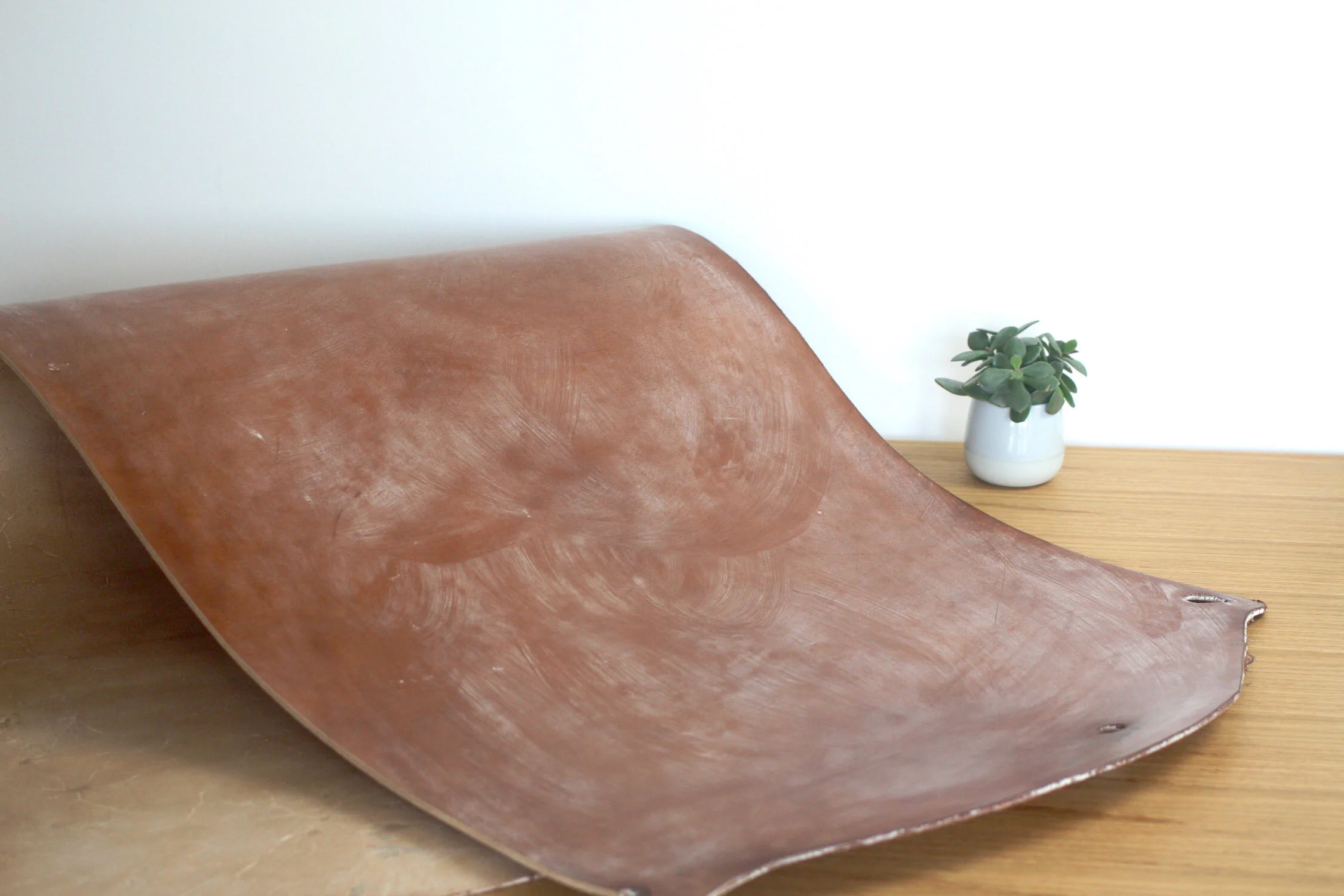Oak Bark Leather
Oak bark leather is one of the finest leathers around coupled with a rich heritage dating back to Roman times in England. This leather is from the renowned J&FJ Baker in the village of Colyton, Devon, England where the tannery, based in farm buildings, has been run by the same family since the 1800’s.
What is ‘oak bark leather’ and what does this term mean?
Oak Bark Leather is leather which has been tanned (animal skin turned to leather) using tannins extracted from the bark of oak trees. It is a process which in the past heavily came from England (UK) because England is rich in this type of tree.
Oak bark tannage is a very slow process taking around 12 months to turn the raw animal skin into leather. This slow process results in a beautiful hard wearing leather with excellent strength and longevity.
In contrast, the Italian vegetable tanned leather I use takes approx 3 weeks to produce.
Oak bark leather is also ‘bridle butt leather’
Baker’s produce different oak bark leathers but the one I use is called bridle butt leather. I have written a post on bridle leather and this explains how it was originally made to use for horse bridles which leads to the thickness and other qualities which it needed to have.
The bridle butt leather from Baker’s which I use in my Felton range has some differences from the bridle leather I use in my Branton range (from J.E Sedgwick). Different tanneries will produce their own variations, this gives them their identity.
On the underside of the oak bark leather I use, you’ll see the natural markings and growth lines from the animal and it’s more pronounced as they leave the underside a natural colour rather than colouring it as per the bridle leather in my Branton range. I see this a natural beauty but this may not be for everyone.
Why is Oak Bark Leather so renowned now?
The oak bark leather produced at J&FJ Baker’s tannery is renowned for its strength, beauty and history. Hermès have leather produced there and high end bespoke shoe makers buy sole leather from there as it works perfectly with their product.
The leather is still produced in the same artisan way as it would have been generations ago and the skills to make this type of leather have been preserved and passed down through generations. The animal skin spends over a year submerged in pits where it gradually turns to leather. The leather is moved from pit to pit by hand. Afterwards it goes through a series of hand processes to smooth the surface, colour application and waxes added (process known as ‘currying).
If you visit their website you will get a feel of the process and you’ll be able to see it is an artisan skill which is all hand done.
The way I would describe why you would buy a product made in this leather (Felton range) over my Branton range is the history and heritage from where the leather is produced. It is made start to finish in Devon, the tannery in based in farmyard buildings and they still use the same skills and some equipment from years ago. It also means it keeps alive the traditional craft skills and passing them onto the future generations. Not only does it keep the skills alive, future generations will also gain an insight into how things could be done all those years ago and experience it in person.
Strength wise, the Branton and Felton range are the same, for me its all about the historical details and preservation.




